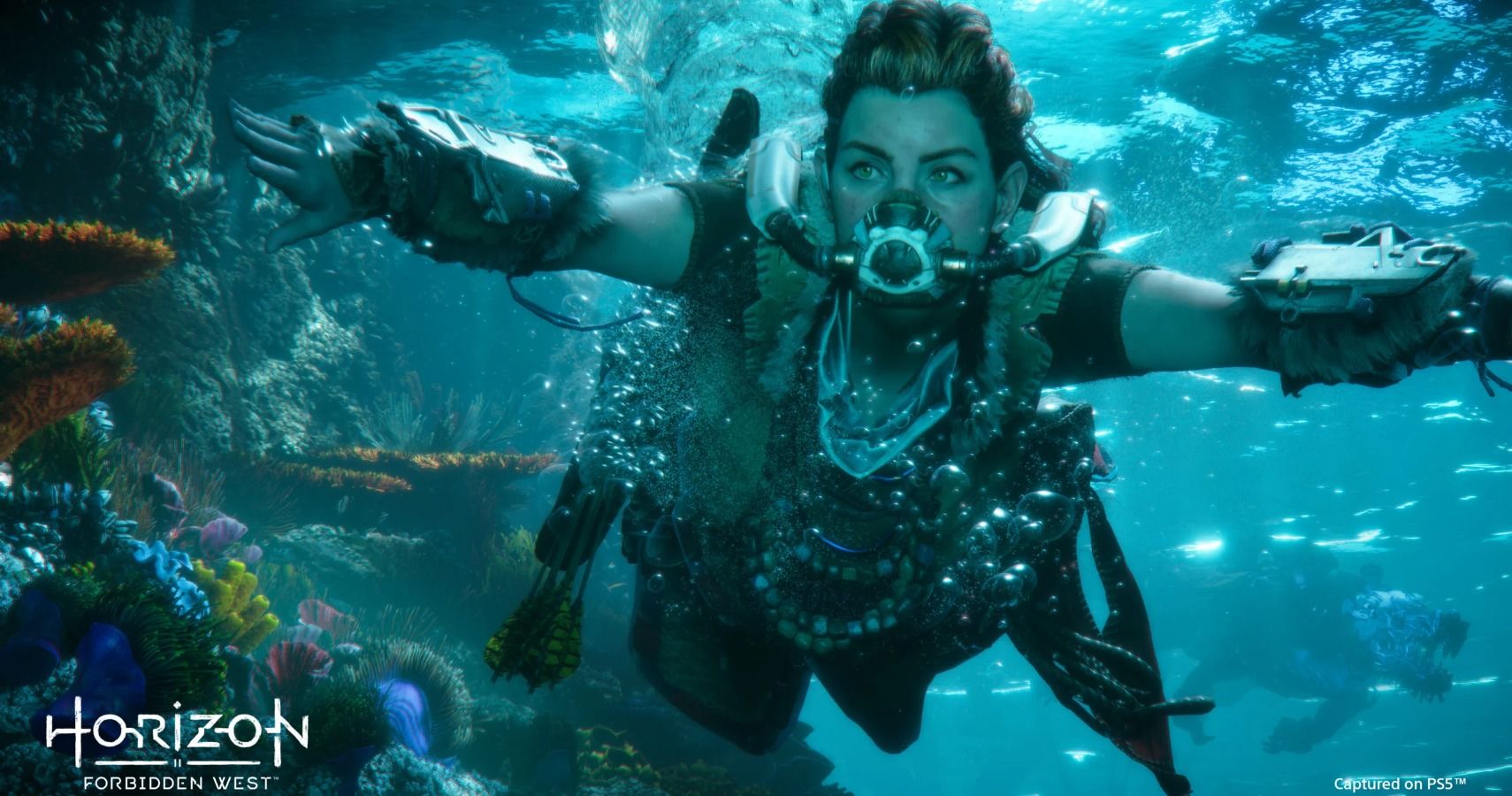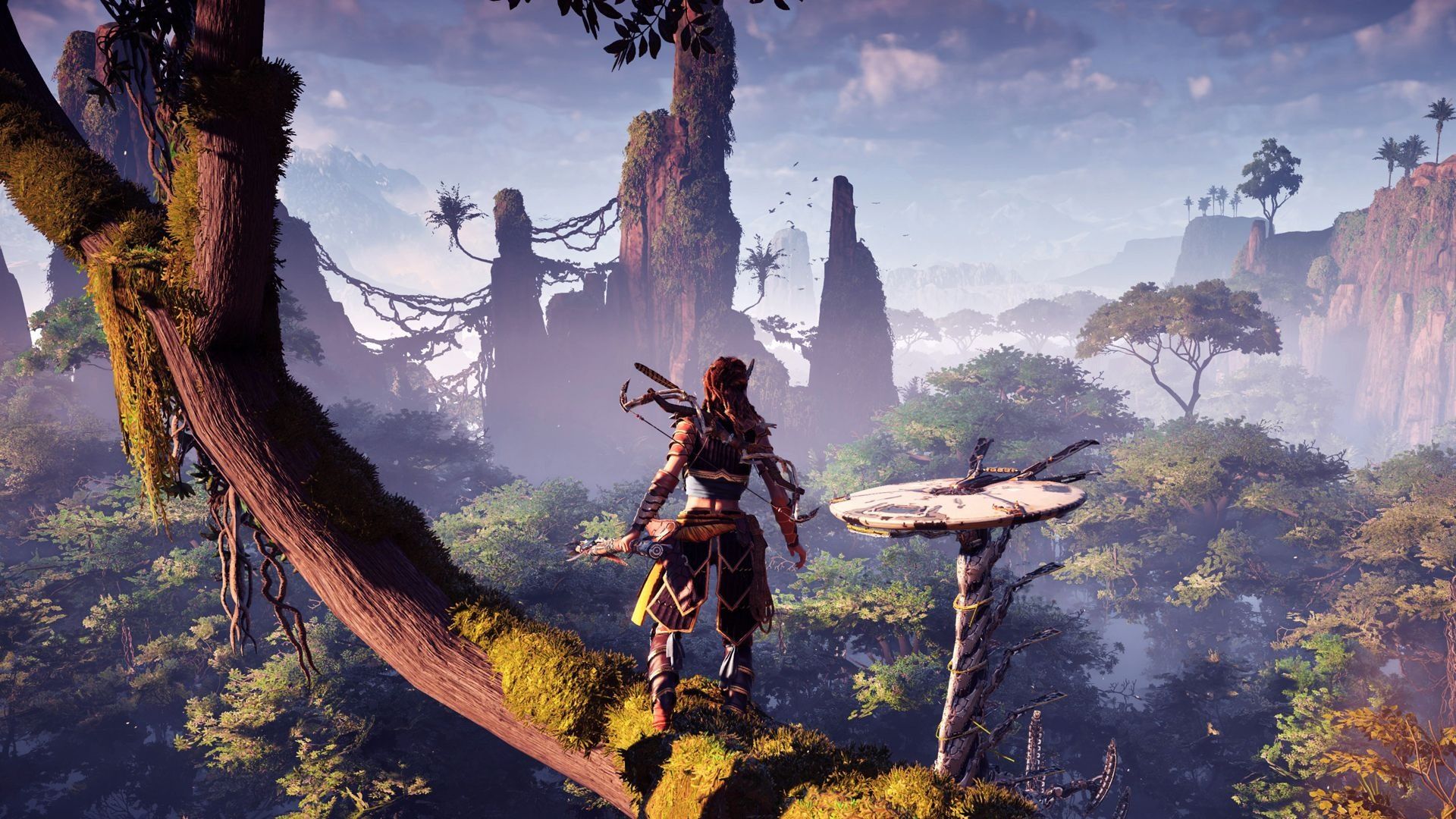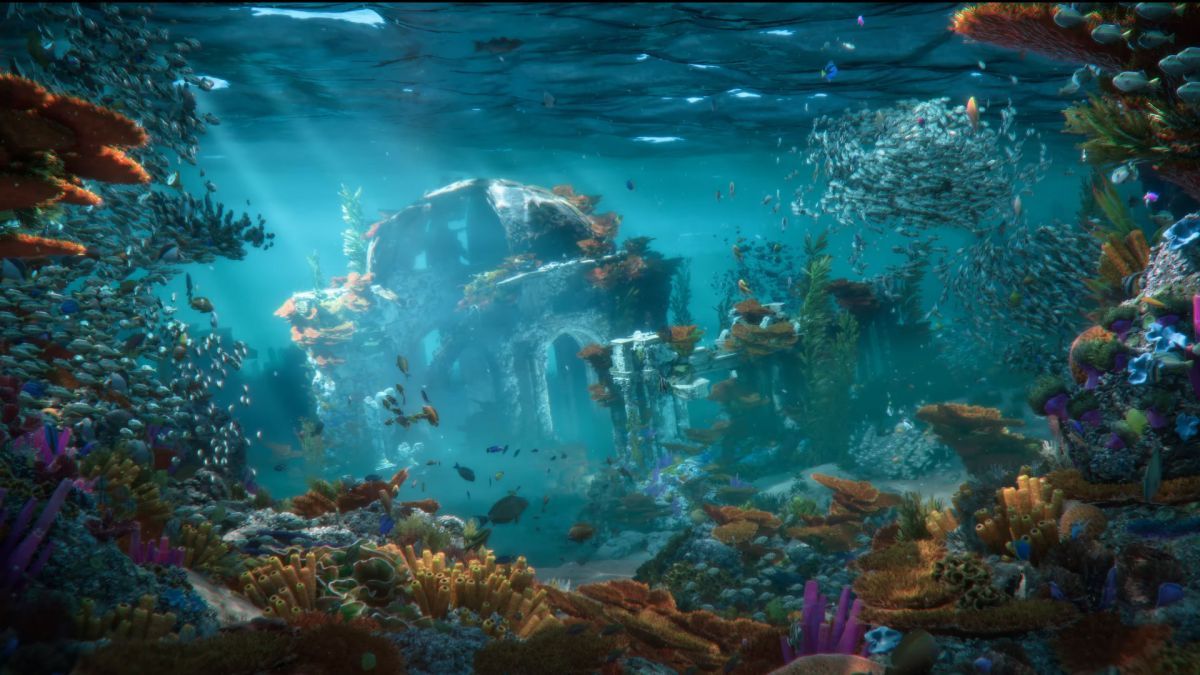Underwater levels - who needs ‘em? Many people would argue that the vast majority of games that tackle swimming would be better off filling their seas with a few extra mountains. Ledge-jumping animations are by and large pretty great, but diving ones? Bursting through the surface of the ocean ones? Doing the breaststroke ones? All rubbish. Horizon Zero Dawn is teeming with lovely hills and cliffs, so what’s all this malarkey about Forbidden West having loads of prehistoric scuba diving?
I’m here to say that, actually, Forbidden West is probably going to have scuba diving sicker than Seasick Steve, who - as his name suggests - is pretty sick. My main reasons for this come from two places: Horizon Zero Dawn, and a GDC talk by Guerrilla senior gameplay designer Paul van Grinsven from way back in 2018, approximately 400 years ago.
First, let’s have a quick look at Horizon Zero Dawn, where movement is already brilliantly unfettered. I’ve always thought the existence of the Nova trails early in the game was designed as a bit of a flex on Guerrilla’s behalf, likely thanks to the proprietary Decima engine it developed alongside Kojima Productions. This goes beyond just sprinting and climbing, though - in particular, the main mobility mechanics that make Horizon Zero Dawn stand out from the crowd are its combat abilities and vaulting animations.
Horizon’s unlockable combat abilities completely change the flow and pace of not just your movement, but its relationship with the environments around you. This is something that I think a lot of people forget about when we discuss mobility - it’s not just the mechanical makeup of propelling a character forward that counts, but the immediate response of every object around you to each and every action you make. While Horizon’s abilities aren’t exactly unique, they are elegantly refined - the fact this game is four years old leads me to believe that we’ll no doubt see brand new and remarkably neater versions of them in Forbidden West.
The abilities I’m on about mostly have to do with time management and the manipulation of space - or, more accurately, the way in which we occupy and pass through it. I’m talking about stuff like Hunter Reflexes, which slows time while you’re jumping or sliding, or Dodge Prowess, which allows you to alternate between long and short rolls. It’s also worth considering your standard hookshot, particularly the exact moment at which it connects and you jolt to a stop in mid-air - that, to me, signals the kind of responsiveness necessary for creating physics systems that render underwater levels as not inherently god-awful.
It might seem like an odd comparison, but bear with me: I think Ori and the Will of the Wisps makes for a fascinating case study here. Will of the Wisps has excellent underwater sections for two reasons: one, the mobility is great, and two, the levels are designed to specifically cater to mobility. It’s in abilities not too dissimilar from those discussed above that we see this dynamic occur - abilities that allow for bursts across several distinctly regimented distances, all of which are affected by temporal differences caused by environmental ones. What I mean is, if Guerrilla is able to code abilities that slow down the world around you as you jump or slide through the air, it can set up underwater structures where movement is slower and more sluggish by default. What’s more, it can afford you greater control over manipulating these different environments by creating underwater equivalents to Dodge Prowess - the best part of underwater levels in Ori is catapulting yourself through the barrier separating water from the air and being able to immediately recognize the difference in weight between them.
This is where I want to refer to van Grinsven’s 2018 GDC talk - specifically, the section at 27:49 where he discusses the process for creating a versatile vaulting system in Horizon Zero Dawn.
Again, this talk is from 2018, a year after Zero Dawn came out and three years prior to Forbidden West’s expected release date. Here, van Grinsven discusses Guerrilla’s existing process for animation warping, which allows vault animations to be manipulated in such a way that they can be used for a variety of different actions, from diving into water to perfectly ambidextrous stepovers. It’s worth remembering that in Horizon Zero Dawn, vaulting was triggered automatically - you didn’t have to press any buttons.
Later in the talk, van Grinsven mentions that Guerrilla wanted to indulge in Full IK for Horizon Zero Dawn but couldn’t due to time constraints. For those unacquainted with the term, it refers to Inverse Kinematics, which is a system that allows for more consistent character animations for a wide variety of actions - it’s the difference between having specific entities instructing your head to go down and your arm to extend if you go to pick something up, and having a single cohesive effector that causes your head to naturally react based on where your arm is extending towards. Since the talk in 2018, technology has progressed beyond Full IK to HumanIK, meaning that Guerrilla could hypothetically go one step further than the step it couldn't make for Horizon Zero Dawn. Why does this matter? Well, if animations were already sufficiently responsive to allow for a buttonless reactive world without Full IK or HumanIK, it’s reasonable to assume that Guerrilla will be able to iterate and annotate both traversal mechanics and traversable environments far beyond what it had before.
Underwater levels can be a pain in the arse, but Luma Pools is one of the best sections in Ori and the Will of the Wisps. I also think it’s worth noting that the underwater levels in The Last of Us Part 2 were pretty decent - they were relatively empty, mind, and didn’t exactly have to facilitate Horizon’s aquatic Snapjaws, but they still worked. This is more down to not having ridiculous camera angles that get eaten by invisible boundaries than anything else, and their relative brevity forgives the lack of meaningful traversal - but The Last of Us Part 2 proves that underwater sections can be designed in such a way that they are at least smooth to swim through. If Horizon Forbidden West is as invested in underwater levels as trailers make it out to be, then I imagine it’s going to take the best parts of its most versatile mobility systems in Zero Dawn and reappropriate them for slower and heavier movement. If that’s the case, I can’t wait to pick out a pair of prehistoric scuba goggles to see what a robotic dinosaur coral reef looks like.



